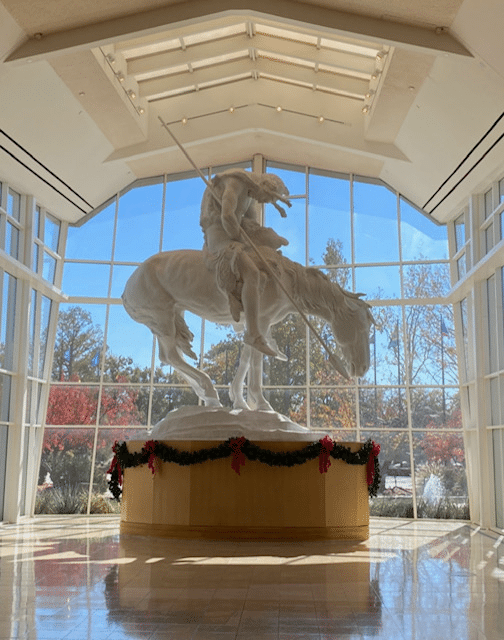November is designated as National Native American Heritage Month, or as it is commonly referred to, American Indian and Alaska Native Heritage Month. This month is a time to celebrate rich and diverse cultures, tradition, and histories and to acknowledge the important contributions of Native people. This is also an opportune time to raise general awareness about unique challenges Native people have faced both historically and in the present and the ways in which tribal citizens have worked to conquer these challenges.
This past weekend I stopped by a museum and in the main entrance stood this statue:

R. David Edmunds, Ph. D., Cherokee wrote this…
In 1894, when James Earle Fraser completed his model of The End of the Trail (pictured above) American civilization stretched from shore to shore. Most Euramericans believed the frontier period was over and that such progress was inevitable. Many viewed Native Americans as part of the past, a vanishing race with no place in the twentieth century. Popular literature portrayed Indian people as “savages,” noble or otherwise. Fraser’s The End of the Trail reflects this legacy: a nineteenth century Indian warrior defeated and bound for oblivion – frozen in time.
By the 1890s Native Americans knew their trail had become steep and rocky, but they believed it would continue. Confined largely to reservations ravaged by disease and starvation, the Indian population declined dramatically. Indian children were forced to attend federally supported boarding schools that attempted to replace traditional tribal values with American culture. Although denied citizenship and a voice in determining their future until 1924, Indian people persisted.
World War II brought dramatic changes to most Native American communities. Modern warriors enlisted in the armed forces, while other Indian men and women moved to urban areas to work in defense industries. Increased cultural pride following the war led many Indian people to seek employment and other opportunities in the non-Indian world. Others supported themselves within the old reservation communities. Today almost half of all Native Americans live in major metropolitan areas. From a low of approximately 250,000 in 1890, the Native American population in the United States now numbers slightly over two million.
Modern Indian people have combined the best of traditional tribal values with the opportunities afforded by contemporary American society. Although some Native Americans still follow the time-honored ways of their ancestors, others have assumed prominent roles within society in education, politics, business, medicine and agriculture. Unlike Fraser’s sculpture, being “Indian” has never been cast in stone. Today, Native Americans proudly ride forward on a trail into the future.
During this National Native American Heritage Month, we honor the cultures that represent the robust Native American heritage of our Nation and their contributions to our society and OCH.
Your OCH DEI Team
